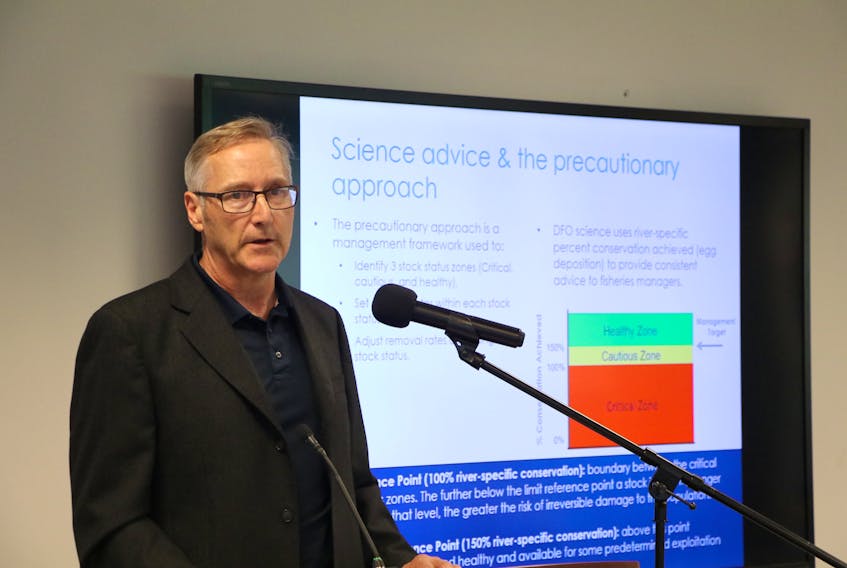As goes with the island, so it goes for Labrador in salmon science.
The Department of Fisheries and Oceans (DFO) science branch is recommending salmon rivers in Labrador be closed to retention angling for the remainder of the season due to an in-season stock review that shows continued declines in salmon returns.
It also recommends catch-and-release angling can continue as long as river water temperatures remain below 18 C. If temperatures rise above that mark, mortality from catch-and-release angling will increase significantly, so the rivers should be shut down when the water temperature hits 18 C.
Sound familiar?
It’s similar to an announcement DFO science made July 18 regarding rivers on the island part of the province. DFO management followed it up by accepting the recommendations. A DFO management decision on Labrador rivers is expected next week.
DFO research scientist Geoff Veinott said rivers assessed in Labrador for the in-season review include English River, Sand Hill River, Muddy Brook River and Southwest Brook Paradise River.
“We didn’t have enough data to do a prediction on English River. As of July 22 there were only six fish gone in English River,” Veinott said. “Usually by that time we would expect to see 25 per cent of the run, which would be the equivalent of 200 fish. It seems they are late in that river this year.”
For the other three rivers, returns are below the 2010-15 time period, he noted. As was found for rivers on the island, the years 2016 and 2017 were also extremely poor years for Labrador rivers — declines of the magnitude and over such a wide geographic range DFO science had not seen before.
“Labrador rivers seem to have recovered a little better than rivers on the island,” Veinott noted. “The Labrador stocks likely have different migration routes, different feeding areas.”
Looking at the big picture, Veinott said, salmon stocks in North America have been declining for a number of years. Newfoundland and Labrador has been one of the last places, until 2016, that had healthy stocks of wild Atlantic salmon.
A number of people have stated they don’t believe the DFO science numbers, saying they are seeing a lot of salmon in the province’s rivers this year.
Veinott, however, said DFO science is confident in their counts.
“We are confident if we fence a river early enough, we will get the whole run,” Veinott said. “Occasionally fences do wash out. We believe our counting fences are extremely accurate in counting the total returns to the river. The river is completely blocked off. There’s only one way upstream and that’s either through our trap or through a narrow opening where we use cameras to film fish passing through and (they) are counted.”
Veinott said if people are seeing a lot of fish in the river, it could be when the fish are holed up in pools as the rivers get low, or they happen to be present when a big part of the run comes in.
A full assessment of the 2018 stock is planned for early 2019.









